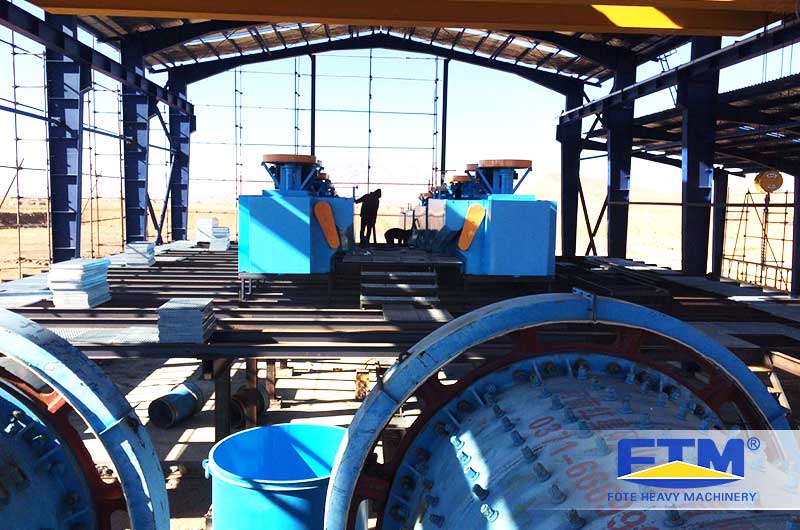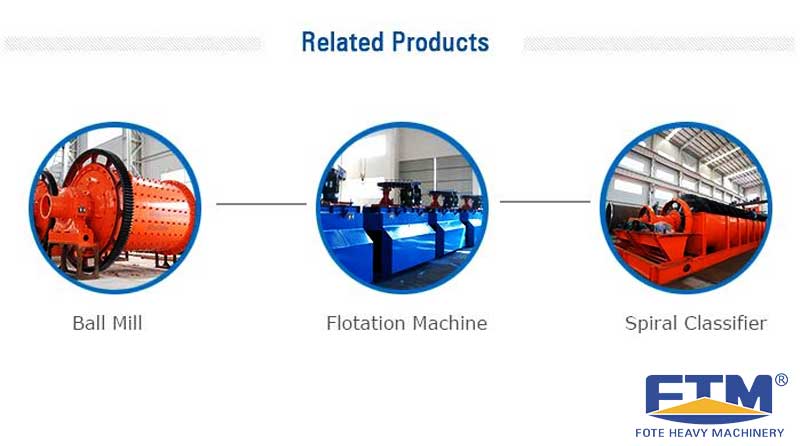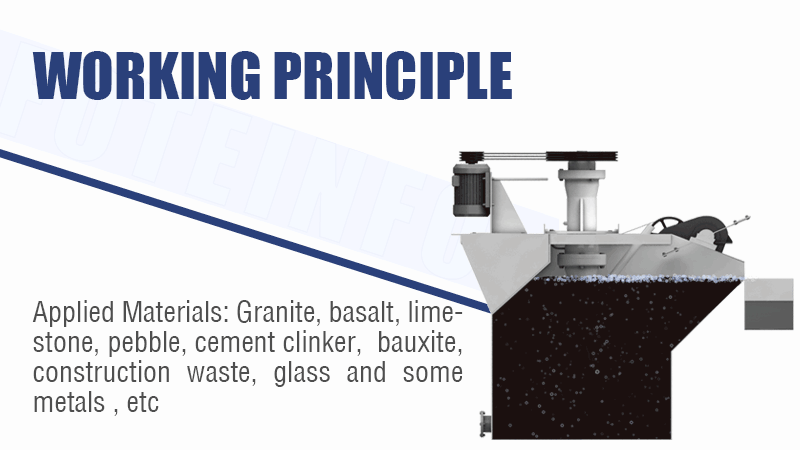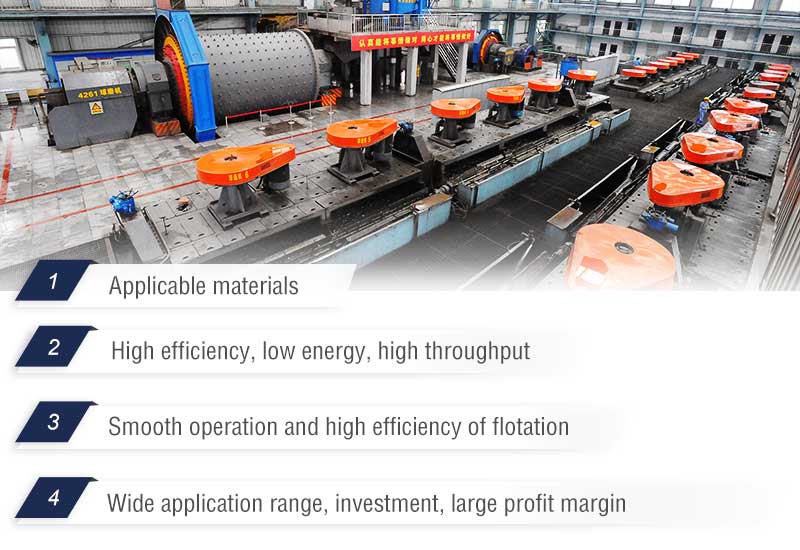 By Fote Machinery Editer
By Fote Machinery Editer
Widely used in various fields of ore dressing industry. For example, the separating of gold ore, copper ore, silver, galena, sphalerite, chalcopyrite, chalcocite, molybdenite, pyrite, nickel sulfide mineral, malachite, cerussite, smithsonite, hemimorphite and hematite, cassiterite, wolframite, ilmenite, spodumene and beryl, rare earth metal, uranium ore and other oxide minerals.
Production Capacity:0.18-7 (m³/min)
Configuration:Jaw crusher, ball mill, classifier, mixing tank, flotation separator, concentrator and dryer.
For the coarse and fine separation of copper ore, zinc, lead, nickel, gold as well as other non-ferrous metals and non-metals, flotation plant can be adopted. Ball mill processes mineral ores into fine material. The flotation separation process is suitable for processing all kinds of ultrafine and fine powder material, which is one of the most important technologies in the ore dressing process. Over 93% of ore dressing operations adopt a flotation separation process, of which the flotation machine is the essential equipment of the whole production line. The flotation process equipment is mainly composed of a crusher, a ball mill, a classifier, a stirring barrel, a flotation machine, a thickener and a dryer.
Flotation plant is widely used in various fields of ore dressing industry. For example, the separating of gold ore, copper ore, silver, galena, sphalerite, chalcopyrite, chalcocite, molybdenite, pyrite, nickel sulfide mineral, malachite, cerussite, smithsonite, hemimorphite and hematite, cassiterite, wolframite, ilmenite, spodumene and beryl, rare earth metal, uranium ore and other oxide minerals.

Fote flotation plants can be divided into gold ore flotation plant, lead zinc flotation plant, copper ore flotation plant and fluorite flotation plant. Just take the gold ore flotation plant as an example:
Flotation is a widely used dressing method for the processing of gold ores in gold ore dressing plants. It is commonly used in the treatment of sulfide mineral ores of high flotation property. Flotation process can maximize the enrichment of gold in sulfide minerals, and the tailings can be directly discarded with low production cost. In China, 80% of gold dressing operations adopt this process.

The gold flotation principle is: high-density flotation and coarse-grained minerals often use the thick pulp; conversely, for the flotation of small density and fine grain size, the thin pulp should be used; the coarse flotation should use pulp with high concentration, which can guarantee the high recovery rate. The fine flotation adopts dilute concentration, which is in favor of improving the quality of concentrate.


 Online Chat
Online Chat